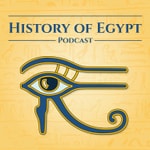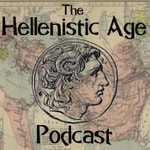The History of Egypt Podcast – Details, episodes & analysis
Podcast details
Technical and general information from the podcast's RSS feed.

The History of Egypt Podcast
Dominic Perry
Frequency: 1 episode/12d. Total Eps: 453

Recent rankings
Latest chart positions across Apple Podcasts and Spotify rankings.
Apple Podcasts
🇬🇧 Great Britain - history
31/07/2025#97🇬🇧 Great Britain - history
30/07/2025#91🇬🇧 Great Britain - history
29/07/2025#83🇬🇧 Great Britain - history
28/07/2025#80🇩🇪 Germany - history
28/07/2025#100🇬🇧 Great Britain - history
21/07/2025#86🇬🇧 Great Britain - history
14/07/2025#91🇬🇧 Great Britain - history
09/07/2025#88🇬🇧 Great Britain - history
08/07/2025#76🇬🇧 Great Britain - history
06/07/2025#92
Spotify
No recent rankings available
Shared links between episodes and podcasts
Links found in episode descriptions and other podcasts that share them.
See all- https://dbfiechter.bandcamp.com/
141 shares
- https://www.keithzizza.net/
18 shares
- https://www.britishmuseum.org
12 shares
- https://twitter.com/Luke_Chaos.
34 shares
- https://twitter.com/Luke_Chaos
18 shares
RSS feed quality and score
Technical evaluation of the podcast's RSS feed quality and structure.
See allScore global : 42%
Publication history
Monthly episode publishing history over the past years.
26c: A Legacy in Flames - The First Intermediate Period (Part 6)
mardi 15 avril 2014 • Duration 01:16:06
26b: Intef the Great, Part 2 - The First Intermediate Period (Part 5b)
lundi 14 avril 2014 • Duration 54:06
Decline & Fall of the Old Kingdom (Part 2)
mercredi 5 mars 2014 • Duration 36:31
168: Return to the Tomb
mardi 30 août 2022 • Duration 26:50
167: Reviving Deir el-Medina
mardi 23 août 2022 • Duration 28:17
News: Carter's Thefts and Tutankhamun's Amulet
mardi 16 août 2022 • Duration 11:28
166: Restoration III, Re-Restoring
mardi 2 août 2022 • Duration 46:04
Appeal: Dakhleh Oasis Project (feat. Seth)
vendredi 29 juillet 2022 • Duration 06:49
165: Praise Ra and Pass the Talatat
mardi 26 juillet 2022 • Duration 36:21
164b: Renovation Station
mardi 12 juillet 2022 • Duration 21:03









